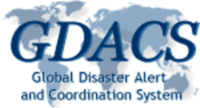RSS feed source: Global Disaster Alert and Coordination Systems (GDACS).
The U.S. National Science Foundation Regional Innovation Engines (NSF Engines) program announced the 29 semifinalists advancing to the next stage of the second competition – spanning critical technologies and applications ranging from energy grid security to maximizing the yield of critical minerals mining to advanced optical sensors. The semifinalist teams, many of whom have been building their regional coalitions for a year or longer, are led by universities, nonprofits, private industry and other organizations from across the United States. View a map of the NSF Engines semifinalists.
Credit: U.S. National Science Foundation
A map showing the locations of the U.S. National Science Foundation Regional Innovation Engines (NSF Engines) program’s 29 finalists for 2025. Explore the map semifinalists in more detail.
“This outstanding cohort of semifinalists clearly demonstrates that America’s technology competitiveness will depend as much on expanding our ability to unlock innovation capacity in every part of our country — from the rural plains and western ranges to cities with rich industrial and manufacturing legacies — as it will on advancing the technologies themselves,” said Erwin Gianchandani, NSF assistant director for Technology, Innovation and Partnerships (NSF TIP). “Each team was selected because it brought strong public and private partners to the table and outlined a promising vision for research, innovation and workforce development in
Click this link to continue reading the article on the source website.


